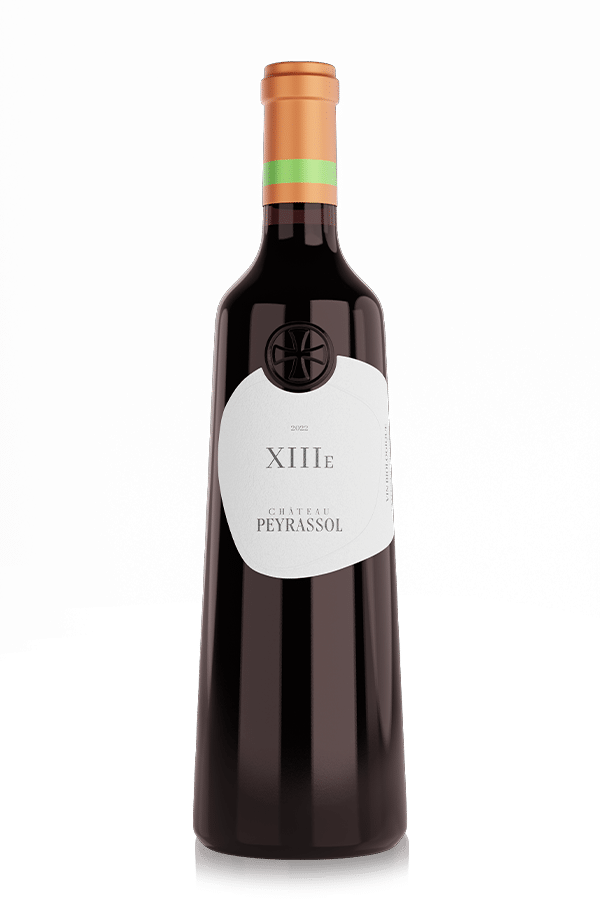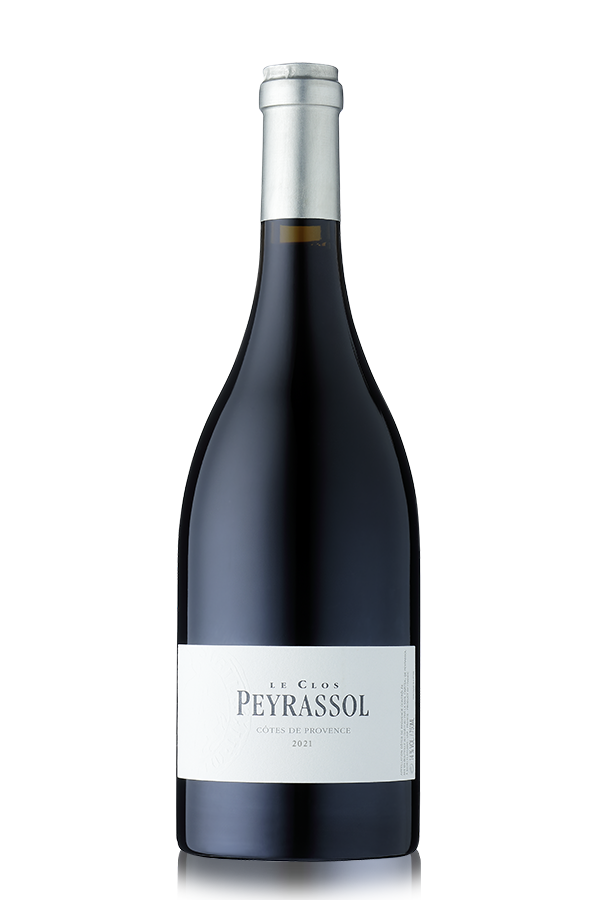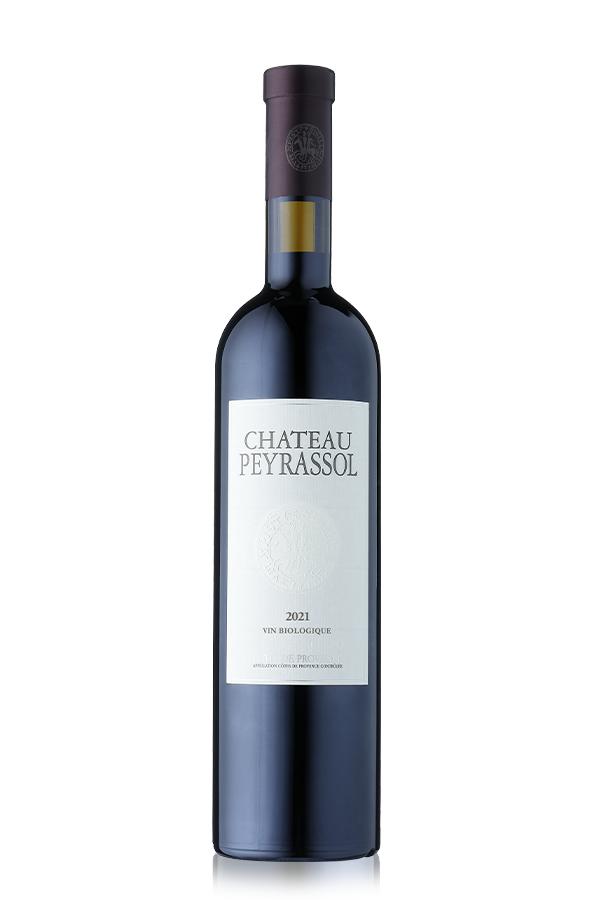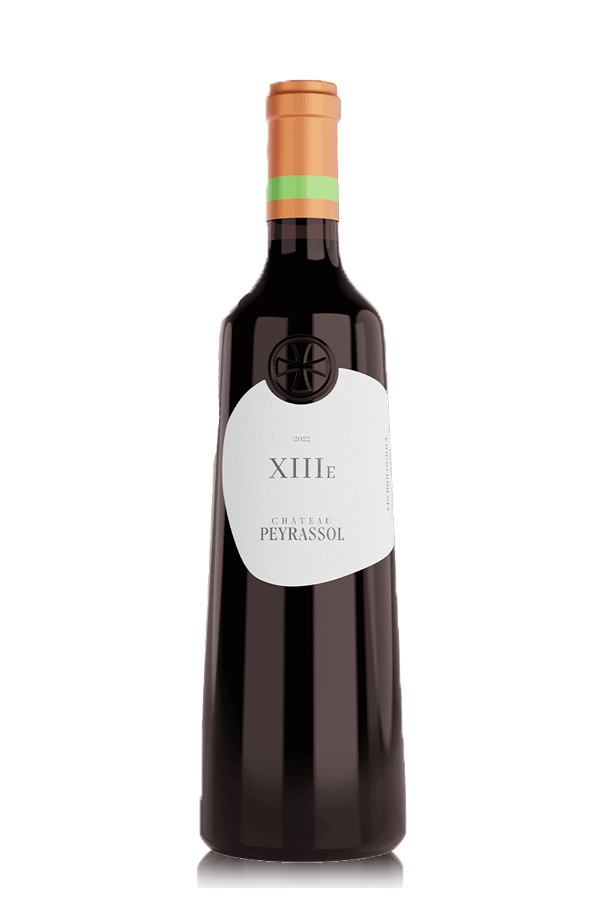
XIIIE
ROUGE 2022
AOP Côtes de Provence – Vin biologique
Fiche technique de XIIIE Rouge
Cette cuvée domaine a vu le jour à l’occasion des 20 ans de l’acquisition de la Commanderie de Peyrassol par Philippe Austruy et rend hommage au siècle de la création du domaine. Âme même du vignoble, XIIIE reflète les couleurs du terroir du vignoble Château Peyrassol. Sa bouteille unique et son étiquette à la forme libre, créées par le designer Pierre Yovanovitch, mêlent authenticité et modernité, en parfait accord avec ce vin qui dévoile sans détour le goût du fruit.
Le millésime 2022
Pendant plus de trois mois, une interminable période de chaleur et de relative sécheresse s’est installée sur la Provence. Cet épisode exceptionnel par sa durée est venu s’ajouter à un cumul de précipitations très faible depuis le début de l’hiver. Chaleur et sécheresse sont bien les deux grandes caractéristiques de l’année écoulée. Le cycle des saisons a démarré par un hiver relativement rigoureux, rythmé de quelques orages isolés. Il fut suivi par un printemps marqué par des gelées et de violentes chutes de grêle qui, heureusement, ont épargné le vignoble Château Peyrassol, officiellement labellisé biologique cette année.
Nos vignes ont particulièrement bien résisté à ce climat sec, à la chaleur parfois accablante. A l’exception des très jeunes vignes et de certains terroirs superficiels, nous n’avons pas observé de symptômes de stress hydrique pendant toute la durée de la croissance végétative. Plusieurs facteurs protecteurs de notre vignoble ont joué dans ce contexte climatique tendu : un enracinement profond de nos pieds de vignes ; la proximité des bois et garrigues du domaine qui drainent les sols et favorisent la production d’humidité ; une action déterminante des équipes dans le vignoble avec une plantation parcimonieuse de céréales et de légumineuses entre les rangs puis le couchage de ces végétaux qui a préservé un peu d’humidité au pied de la plante et, enfin, un effeuillage maîtrisé qui a permis de protégé les grappes du soleil brûlant de l’été.
À partir du mois d’août, la maturation des baies nous a ensuite réservé son lot de surprises. Les teneurs en sucre montaient très rapidement sur les cépages précoces avec un effritement des acidités. Les cépages plus tardifs peinaient au contraire à démarrer leur chargement en sucre avec des prises de maturité tout à fait inhabituelles. Ces comportements surprenants nous ont conduits à une vigilance accrue, un suivi méticuleux, à la parcelle, au pied de vigne près, pour organiser une récolte finalement très concentrée entre le 25 août et le 28 septembre afin de saisir les baies au meilleur de leur équilibre.
Les fermentations se sont terminées avec des moûts en blanc et rosé superbement aromatiques. Les rouges libèrent de belles couleurs et des arômes puissants.
Nature des sols
Argiles et calcaires des vallées intérieures, associés à quelques parcelles de terroirs frais et profonds. Fraicheur entretenue par choix de parcelles à exposition Nord.


